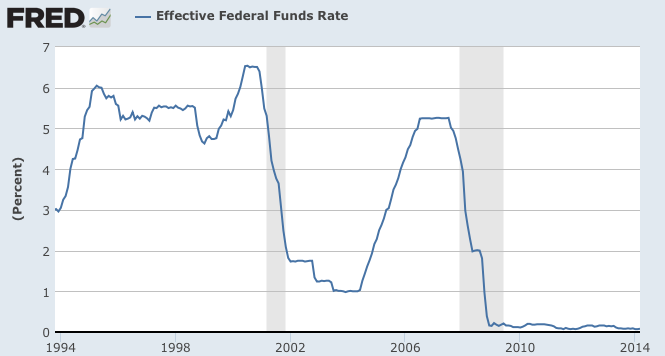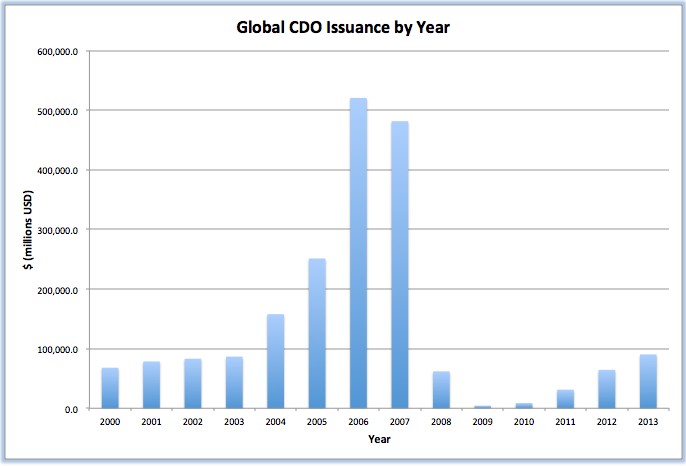This article was last updated on April 16, 2022
Canada: ![]() Oye! Times readers Get FREE $30 to spend on Amazon, Walmart…
Oye! Times readers Get FREE $30 to spend on Amazon, Walmart…
USA: ![]() Oye! Times readers Get FREE $30 to spend on Amazon, Walmart…Back in October 2013, I posted a brief on the return of collateralized debt obligations or CDOs, those toxic little gems that helped bring the financial world to its knees in 2008 – 2009. I thought that it was time for an update to see what the great minds of Wall Street are selling to their discerning clientele and how much they are selling.
Oye! Times readers Get FREE $30 to spend on Amazon, Walmart…Back in October 2013, I posted a brief on the return of collateralized debt obligations or CDOs, those toxic little gems that helped bring the financial world to its knees in 2008 – 2009. I thought that it was time for an update to see what the great minds of Wall Street are selling to their discerning clientele and how much they are selling.
Let's take a quick lesson in exactly what CDOs are, remembering that this is what happened to interest rates over the past two decades:
Back in the early 2000s, as investors began to get more than a little perturbed about the dropping returns on their fixed income investments, Wall Streeters creatively began to bundle together assets of widely varying types, including loans, mortgages and leases that served as collateral for the CDO. The idea was that these "no risk", high grade investments would generate a stream of cash flow to investors and a massive stream of cash flow to the issuing investment banks and their employees. These bundled assets were sold to individual investors, pension funds and governments who desperately needed higher returns in what was then thought to be a low interest rate environment, not unlike today. Unfortunately, as investors found out the hard way, many of these collateralized debt obligations contained a substantial measure of toxic debt, particularly subprime mortgages which were accompanied by very high default rates. So much for the "assets" and "collateral". Despite their AAA rating, many of these CDOs plunged in value, taking the aforementioned investors on a long and painful downhill ride. According to estimates made in 2012 by the Federal Reserve Bank of Philadelphia, of the $641 billion worth of structured finance asset-backed securities collateralized debt obligations (that's a mouthful!) or SF ABS CDOs that traded at the desks of the major investment banks in the United States, a total of $420 billion or 65 percent of the total will be written down!
Now, a sane person would think that investment bankers and investors learned from their mistakes and would refrain from making the same error in judgement again. Perhaps not, as we will see.
From SIFMA, here is a graph showing the global volume of CDOs by year issued since 2000:
You'll notice the very sharp drop off in issuance of CDOs when the bottom fell out in 2008. Both Wall Street and investors got wise and dropped the idea of issuing and purchasing CDOs. By 2009, only $4.3 billion worth of CDOs were issued, down 99 percent from the peak year.
Now, let's look at the recent past. Looking at 2013, while we haven't yet reached the heady year of 2006 when $520 billion worth of CDOs was issued, the volume is definitely moving upward, hitting $90.3 billion for the year, up from 28.7 percent from 2012. In the first quarter of 2014, $26.029 billion worth of CDOs were issued, the second highest quarterly total since the first quarter of 2013. Wall Street and their overseas counterparts could well be setting us up for the first $100 billion CDO year since 2007 if the issuance rate seen in Q1 2014 continues.
So, have the world's investment banks and investors learned a lesson from the Great Depression? Apparently not. The "too big to fail" mantra of 2008 – 2009 is alive and well and living in the hallowed executive suites of the world's largest banks.
Click HERE to read more of Glen Asher's columns
You can publish this article on your website as long as you provide a link back to this page.



Be the first to comment